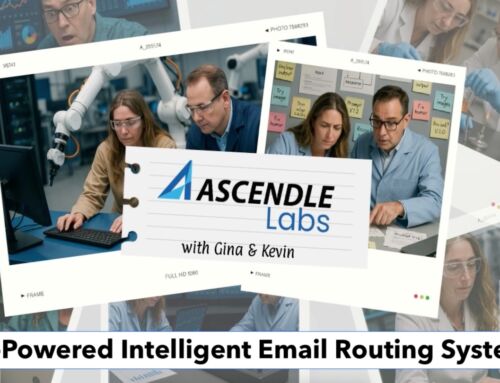“Did you hear about the new commercial software product we’ve been developing? It’s gonna revolutionize your business. We’ve been working on it for two years now and it’s almost done!”
“Nope. Never heard of it. We just bought some competitor’s product, though…”
When it comes to commercial software development, there are secrets, and then there are secrets.
The first kind of secret is good – like protecting your trade and proprietary info. But the second kind of secret, as evidenced by the conversation above, is not doing your business any favors.
Yes, you want to keep your secrets secret. But what is a secret, really? Or, more to the point, what should you be keeping secret? And from whom?
Those are the questions I see so many companies failing to answer. Instead, they focus on how to keep their information secret. And then they do it, without ever asking why… or how it could hurt them, in the long run.
Time and again, I’ve seen this one issue derail commercial development projects from the get-go. When you keep your software secret from the wrong people, you tend to end up with the wrong software.
So to help you avoid that problem, I’ve come up with the following list of Do’s and Don’ts for keeping your secrets secret.
DO: Always work closely with your ideal customers and end-users.
Your development should be driven by feedback, usage, and experience. For that, you need to get it into the hands of customers as soon as possible. You can always limit the release and ask users to sign non-disclosure agreements, if you want to.
DON’T: Hide your idea completely from your customers and the market.
If you do this, you will build the wrong software. Or, at least, not the software the market really wants. One lesson I learned long ago is that businesses never know exactly what customers want until they get something into the customers’ hands.
DO: Get your minimum viable product (MVP) to market quickly.
Focus on the smallest possible product you could get to market now and still provide value to the customer. We call that the minimum viable product (MVP), and it’s one of the keys to our
success here at Ascendle. Once you’ve established your MVP, keep going… as you can see here, you’re only one-eighth the distance from your MVP that you think you are.
DON’T: Build your complete commercial software application first and then release it.
Why spend years creating full-featured commercial software before getting any real feedback? This is the old school approach – and it’s no longer competitive in today’s fast-paced environment. As Eric Ries, author of The Lean Startup, puts it, one of your highest priorities should be “to start the feedback process as quickly as possible.”
DO: Trademark your software application’s name and logo.
Trademarks are relatively easy to file. They’re also relatively inexpensive. And they provide a small measure of protection for the branding of your app. Among other things, a trademark can prevent competitors from stealing your traffic with a similar name or look. And while your content and code is not protected by it, trademark requests receive official timestamps – offering a valuable frame of reference when needed. Finally, a trademark does not sidetrack or hinder your development.
DON’T: Think you need a patent to keep your software safe.
In America, we’re conditioned to thinking of patents as the ultimate protection for our ideas. For that reason, many commercial software developers want to go straight for a patent – before they even start coding. But intellectual property rights in the Information Age are changing rapidly, especially when it comes to software. In some ways, they can even hinder your business.
DO: Create a strategic plan for sharing information with the general public and the press.
Let’s face it… people are going to ask questions, and people are going to talk. The best way to get a handle on it is to anticipate it and form a plan. For example, what can stakeholders and project team members tell their friends and family about what they’re working on? Who will liaison with the press and how should your team refer questions to them? Make sure your team clearly understands this plan and whatever level of secrecy you expect.
DON’T: Refuse to share anything until your application is ready for release.
Anticipation can be a wonderful sales tool. The press can create publicity for your app, if you work with them. Find publications and sites where your customers are, and start a dialogue now. Give them some updates of your progress. You might find a market already primed for you when your software is released, if you work it right. And some customers might even wait for your solution if they know it’s coming and have some idea of what to expect.
DO: Strengthen your position with partnerships.
Some companies shy away from working with partners because they’re afraid of revealing secrets to another whole layer of “risk.” But in many cases, these partnerships could strengthen your position and improve your success metrics. Bringing in a marketing firm or consultants, for example, could help you find the right markets and audiences early on – instead of chasing after the wrong feedback. In fact, this is one of the many “unlooked for” advantages our clients discover when working with Ascendle. We can also help you line up distribution channel partners (whether for physical or digital delivery), which is equally important. You can always insist your partners sign non-disclosure agreements to give you legal peace of mind, but don’t avoid partnerships just to keep those secrets safe.
DON’T: Reveal your marketing strategies too soon.
Putting feelers out there to foster early demand is one thing. But too much info on how you intend to market your app can provide ammo for your competition, especially prior to your MVP launch. After all, your marketing strategy is often just as important to success as the software itself. And you don’t want competitors making moves to block you before your release date even arrives. So form those partnerships, set your strategies, and protect those plans just as you would your software. For companies with existing products, it’s far easier and cheaper to copy (or obstruct) your marketing strategy than recreate your software. So be prepared.






